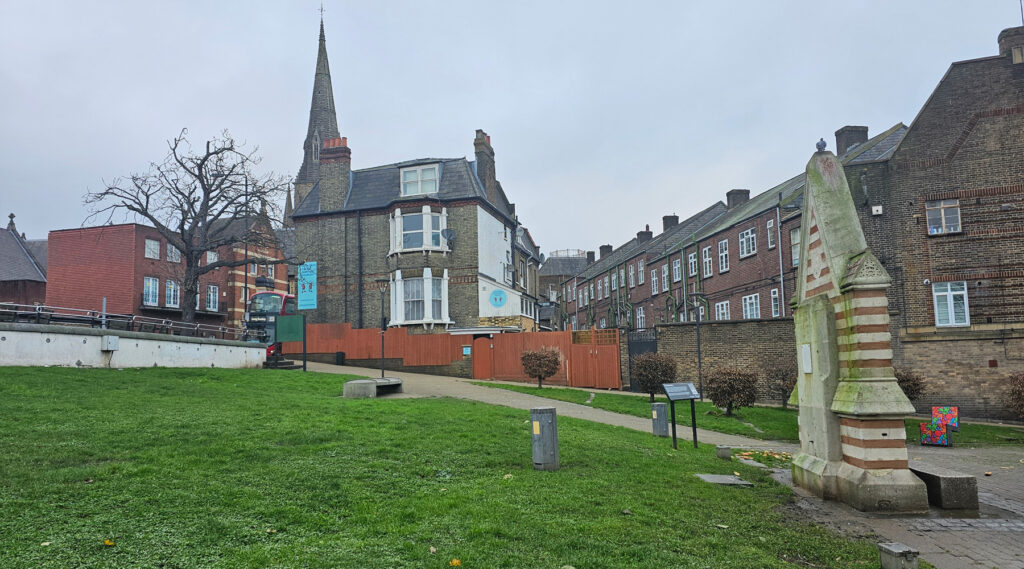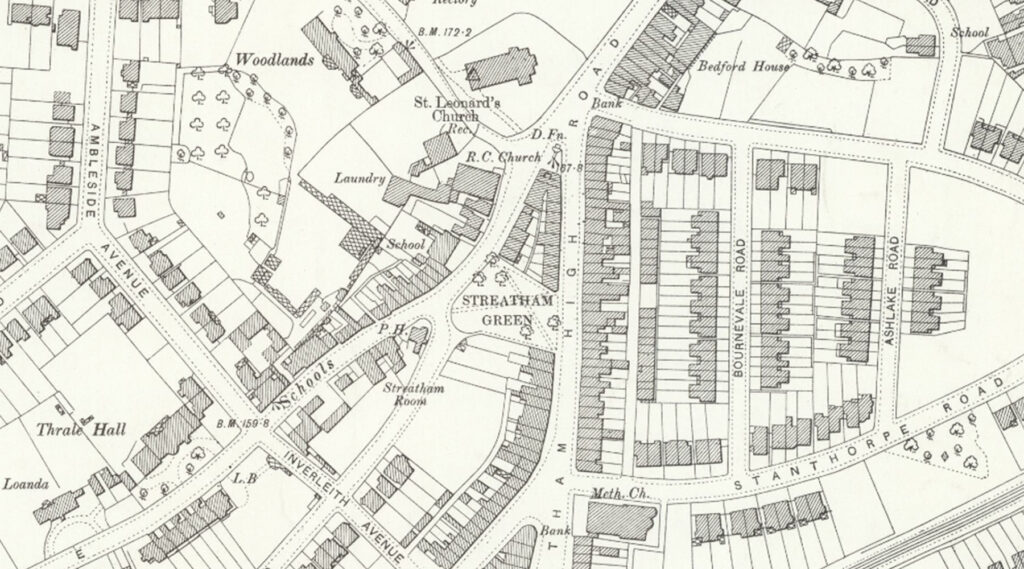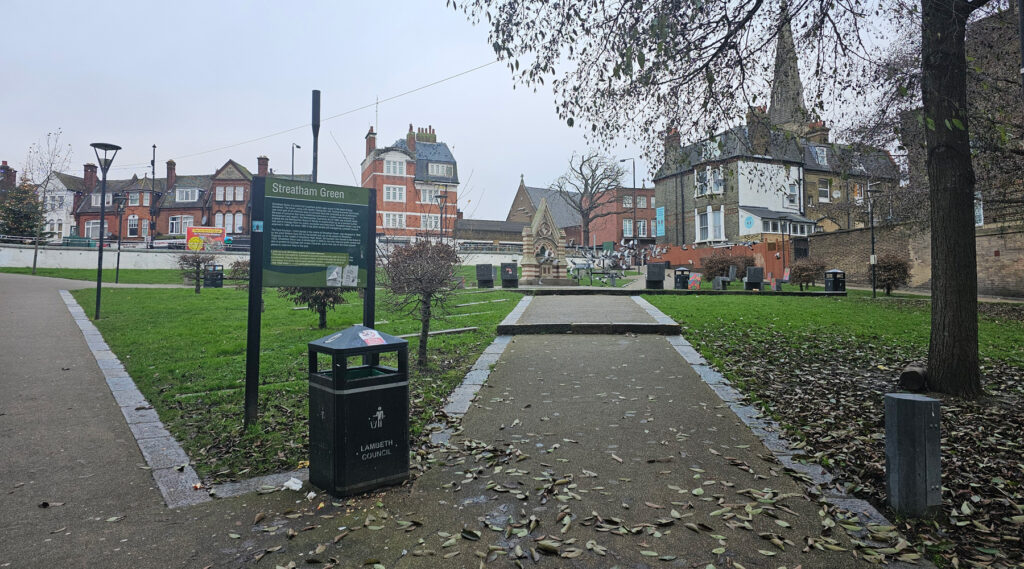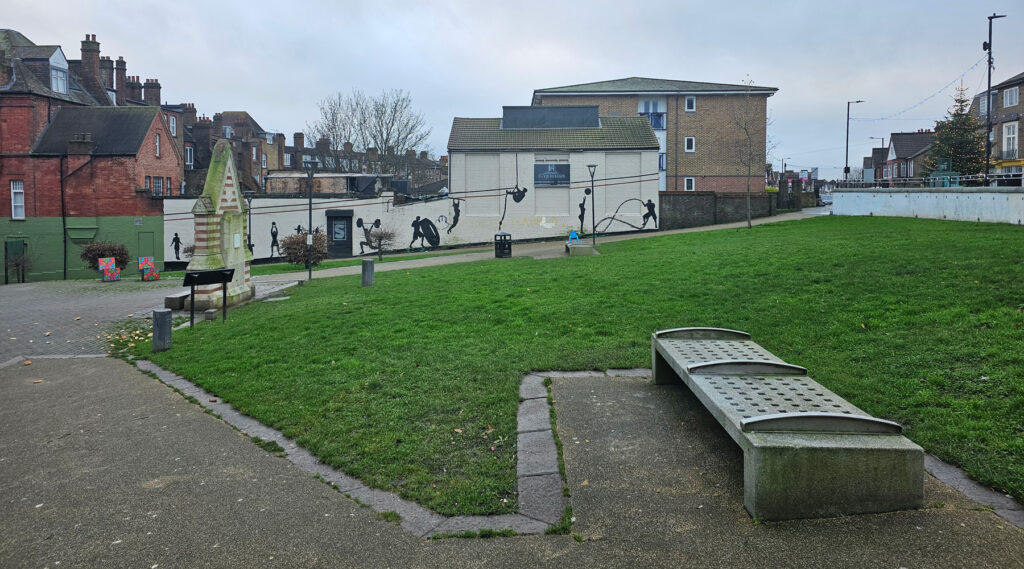Sitting next to Streatham High Street is a pocket park that likely owes its origins to attempts to save it from development when this part of London was still largely fields.
According to one report, there was an attempt to enclose the green in 1794 as private property, but the Vestry asserted popular rights to common land. There’s also a suggestion that the village green was once home to the local lock-up to house prisoners overnight, although it’s likely to have been little more than a small brick shed, somewhat similar to this.
In 1894, following a lengthy debate about who was responsible for the cost – the local council or the London County Council, they added a street lamp to the village green. Later in 1897, it was decided that the green should be laid out as an ornamental space, with new paths and fencing, to look unlike this.
Around the turn of the century, there was a lengthy and exceptionally tedious correspondence in the Streatham News about the green, with pople arguing over the most petty of issues about its name and looking after the green.
The park was slightly reduced in size when in 1908, the London County Council approved plans to widen Streatham High Street and paid £250 to buy about 77 square yards of the park. That also saw the old chestnut trees cut down, to local lamentations.
A bit later, in 1922/23, the green was nearly dug up, to have public toilets installed underneath, but that never got the funding needed.
A decade afterwards, the green gained what is probably its most distinctive feature today – the drinking fountain. Known as the Dyce Drinking Fountain, after its designer, William Dyce, it stood nearby but was moved to the pocket park in 1933, and restored in 2015.
In 1939, the green gained a war function, when it was used to demonstrate what an Anderson Shelter would look like when they are delivered to people’s homes.
The park was most recently refurbished in 2004/5 when the current central paved area and searing were added. The acrobatics painting on the wall was added in early 2018.
Today’s park is mainly a grassy space with lots of paving and the fountain in the centre.
And thanks to a local crazy bird person with a penchant for dropping lots of bread rolls in the park, a very large resident population of pigeons who objected to having breakfast interrupted.











It’s Streatham High Road, not Street
Oh, and a lot of drunken people at various times of the day and night..!
Love your pocket park stories! There’s always an interesting historic background.
We know this one well. Whislt waiting for a bus towards Tooting try playing the game of “Guessing which substance abuser will fall of the seat first”. Here it can be played at all hours of the day. They are normally harmless but it can be a bit worrying when you are by yourself late at night.